How to Exercise After a Foot or Leg Injury
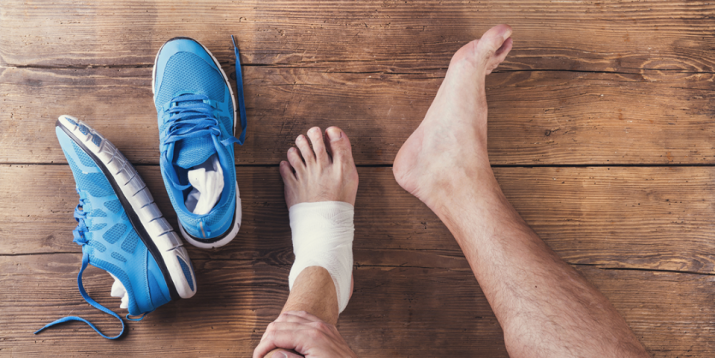
We hear all the time that it’s challenging to stick to a regular workout routine. So when you are happy to do the work to stay healthy, fitness injuries can feel like a betrayal by your own body.
But you shouldn’t think of an injury as a defeat or fear it might sabotage your fitness goals, experts say. You can exercise with a foot injury without exacerbating it or prolonging your recovery time. You just need to be smart and safe about it.
The first thing to know, which might make you feel a little better, is that you’re not alone. Lower extremity injuries are very common, and the knee joint is particularly easy to injure, says John Mercer, Ph.D., a kinesiology and nutrition sciences professor at the University of Nevada, Las Vegas.
“The knee joint is so critical to locomotion in moving forward, backward, and even side to side,” Mercer says. “It needs lots of mobility, but on the other hand, it also needs to be stable. So it’s very susceptible to injury.”
We’ll walk you through different types of foot and leg injuries, as well as their potential treatments, but you likely clicked on this story to find some exercises to try. So we’ll start there. But first:
Talk to your doctor
We can’t overemphasize the importance of getting approval from your doctor or physical therapist before trying any of these exercises. Professionals can evaluate the severity of your injury, how your body moves, and other factors (such as age) that can affect how long it might take you to heal.
With their approval, try some of the following tips to keep your head in the game while you recover.
Exercises When You Have a Lower-Body Injury
If your injury isn’t severe and you’re able to safely exercise your upper body, here’s what to try.
1. Strength training

Strength training with free weights or resistance bands can be done standing if you’re able, or while seated or lying on a bench, says Carlos Teasdale, CSCS. Upright rows and biceps curls are effective toning exercises that can be performed just as effectively sitting down as they are standing up.
“Modified push-ups or planks are also great as long as you’re not putting strain on anything that hurts,” Teasdale says. While standing or sitting, use resistance bands to do arm curls, and lift hands above your head to stretch, he suggests.
If you have access to a pool, the resistance of the water helps keep arms toned, just moving through it or using weights designed for water use, if your doctor OKs it, Mercer says.
You can also do triceps dips with a sturdy chair as long as you’re able to put some weight on your heels and legs.
2. Arm biking and rowing
If you have access to one (many gyms have them), try a stationary bike or rowing machine that you pedal with your arms. But get your doctor’s or therapist’s blessing first, Teasdale says.
Exercises When You Have an Injury to One Leg
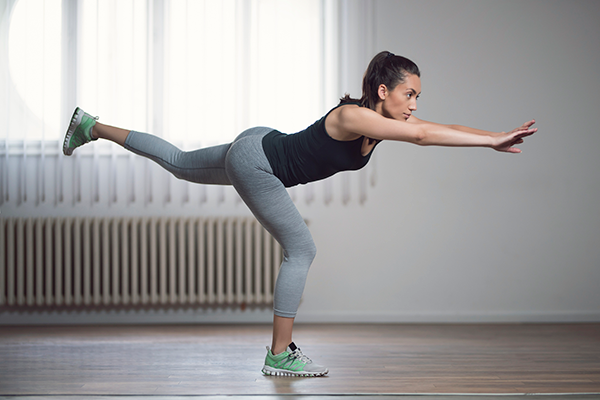
If you’ve got one good leg/foot, don’t neglect it, Teasdale says. Some studies suggest that when you train one limb, the other limb benefits, too.
At home
If your doctor approves, try balancing on your good leg, making sure you have a sturdy chair, crutch, or wall nearby to grab so you don’t fall. Balance is one of the first things to go after an injury, so balance exercises can help you keep it.
At the gym
You can work out the good leg (using lighter than normal weights and with doctor approval) on the leg press, knee extension, and hamstring curl machines, Teasdale says.
“That could prevent atrophy of the muscles,” Teasdale says. “If you’re able to, it’s silly not to train the good leg.”
Leg lifts, either standing or lying down, can also help maintain leg muscles, Teasdale says. Try three sets and 10 reps each of front, back, and side leg lifts if you’re able to, he suggests.
“Any range of motion is going to help in the long run,” he says. “Leg lifts on your side or stomach are all solid. If you can move your leg pain-free, then move it.”
How to Exercise When Recovering From a Lower-Body Injury
If you’re at a stage in your healing process from a foot or leg injury where you’ve gotten approval to start exercising your lower extremities, here are some great options.
1. Swimming
If you have a lower extremity injury, moving in water — such as walking across a pool — where there’s some resistance can be a good thing, Mercer says. Swimming, however, can add some stress to ligaments and muscles, so you need to be careful and ask your doctor or physical therapist what exercises might be appropriate for you to do in a pool.
They might suggest swimming with a buoy between your legs to keep your knees in place if you have a knee injury.
“Many athletes wear neoprene shorts in a pool during recovery, which actually helps lift the lower body up and makes swimming a little easier and more enjoyable,” Mercer says.
2. Hiking
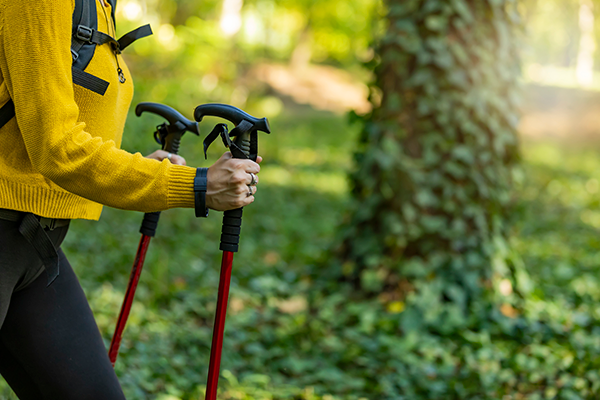
If walking is no longer painful or uncomfortable for you, try hiking with walking poles, Mercer says. They can help ease pressure on knees a bit and are great for people worried about balance.
3. Walking
If you’re able to bear weight on your feet and knees, walking is great rehab. It can keep muscles from atrophying, get your heart pumping and oxygen flowing, and keep your sense of balance on point.
4. Bicycling
Cycling is often considered good rehab exercise because it’s not weight-bearing. But if you haven’t healed completely, you need to be careful on a bike, Mercer says.
“It can be a problem if the range of motion is too big for the knee joint or hip to handle,” he explains.
5. Yoga
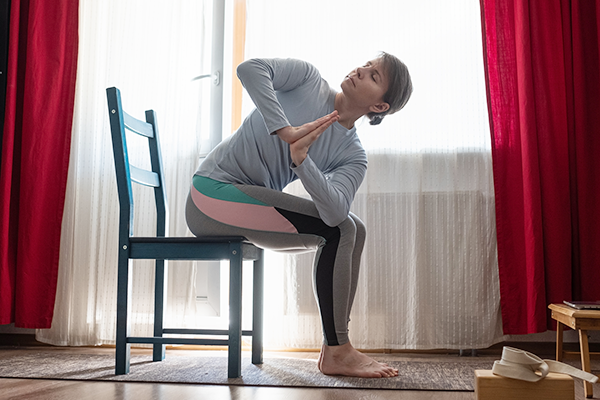
Slow, balanced and coordinated movement is key for recovery, Teasdale says. If you’re still not able to put pressure on your knees or feet during warrior poses, other yoga (even chair yoga) moves can strengthen your core, stretch your hip muscles, and strengthen your lower back.
Tips on Getting Through Foot or Leg Injuries
Mercer says that foot injuries are often related to too much stress on the ligaments, tendons, and bones. There are a myriad of tears and strains that can be sustained by the lower extremities, and healing is very individual, so it’s difficult to ballpark how long the recovery time will be for injuries, Mercer says.
Some mild injuries might improve after a few weeks of rest, while others could take a year to repair fully. A ligament injury, for example, doesn’t necessarily get much blood flow, so it could take longer to heal, he says.
Plantar fasciitis (inflamed tissue along the bottom of the foot that causes heel pain), or an injury to a tendon in the foot, also lack significant blood flow. It can take weeks, months, or longer to heal, depending on how soon you pinpoint the injury.
“It’s very important to take time to figure out what the injury is with the help of a medical professional,” Mercer says. “Mistreating it can make it worse. If you treat it like a muscle injury and it’s really a ligament or tendon injury, you can do further damage.”
You know your body best, so make sure to listen to what it’s telling you, says Mahmood Gharib, MD, assistant professor in the department of Rehabilitation Medicine at the University of Minnesota Medical School in Minneapolis.
“If something isn’t right or isn’t getting better, get a medical opinion as soon as possible,” Gharib says.
Physical therapy
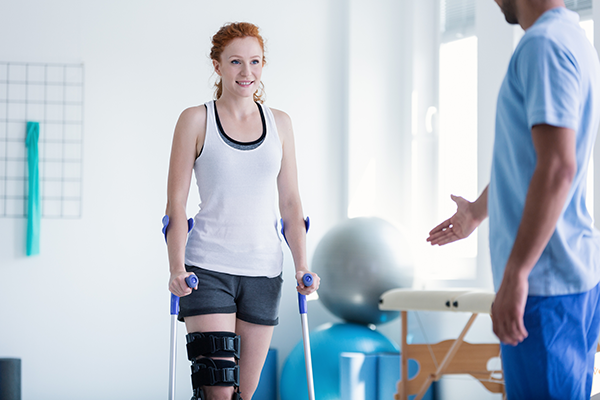
If your doctor refers you to a physical therapist, they should help you pinpoint the weak link in the chain to help you prevent future injuries and heal from this one, says Teasdale. They can suggest exercises to strengthen a weak hamstring, for example, if that’s an issue.
Things to look out for and take note of when you do see a doctor or therapist are pain (particularly pain that’s out of proportion with a seemingly minor injury), significant swelling, and limited active range of motion, Gharib says. Also, take note if your balance seems off.
Get in the right mindset
It’s also helpful to reframe how you think about the healing process, making it feel like less of a burden. Although they feel like a nuisance when they’re happening, pain and swelling are an essential part of healing, Gharib says: “The inflammation occurs because cells are coming in and trying to heal the injury site. It’s part of the healing cascade.”
Some zen while recovering from an injury isn’t just good for your mental health, either. The biggest mistake many people make — especially if they’re new to a sport or workout routine and they’re excited to keep going — is that they don’t take the time to let the body heal and get stronger, Mercer says.
“Injuries often happen because we need it,” Teasdale agrees. “It might be the body telling us we’re overstressing ourselves.”
Take it easy
Rest and the right nutrition are essential when recovering from injury, Mercer says.
“If the body is trying to handle some stress due to sugar or processed food, the body is paying attention to that rather than to the injury,” Mercer says. “A nutritious diet that includes dark green leafy vegetables and the right amount of protein, fat, and carbs helps healing. Good sleep is also a critical part of the recovery process.”
